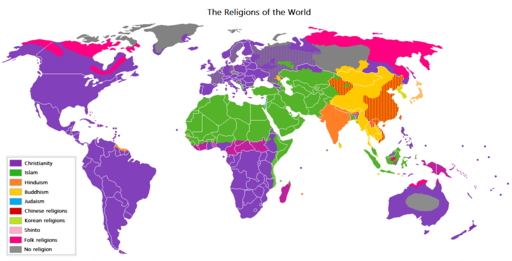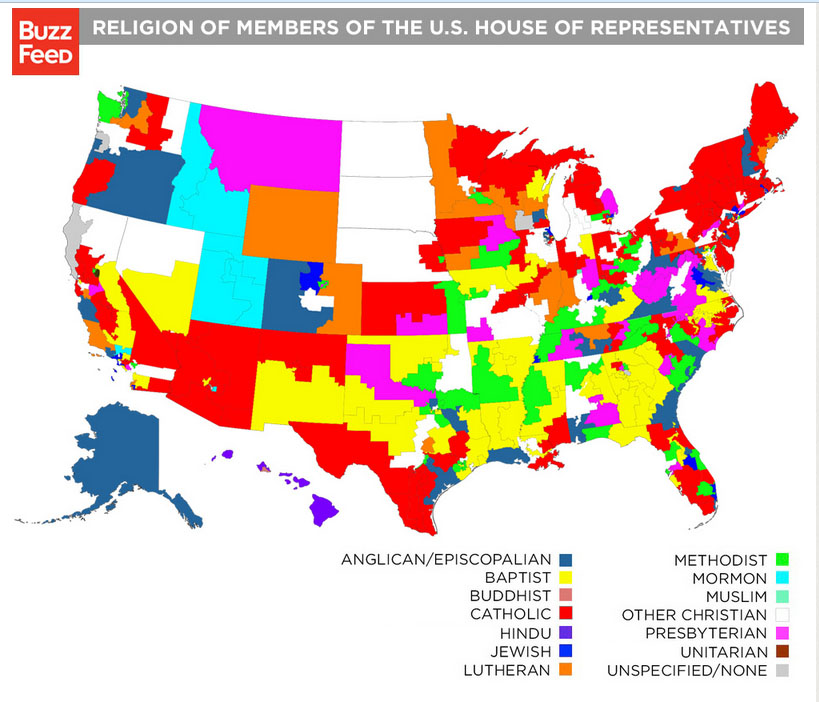 “World religions” as a way of organizing the world have become the focus of scholarly critiques (including my recent post) that connect this discourse to the interests and assumptions of European Christians. In the midst of such critiques, some minority/marginalized groups also have adopted the concept of world religions because it can be useful to them. As a case in point, Rajan Zed,who self-identifies as a “Hindu statesman” and the president of the Universal Society of Hinduism, issued a press release earlier this week over the release of information on the cheating website Ashley Madison and subsequent headlines that 1 in 5 in Ottawa are enrolled. Continue reading “Using World Religions”
“World religions” as a way of organizing the world have become the focus of scholarly critiques (including my recent post) that connect this discourse to the interests and assumptions of European Christians. In the midst of such critiques, some minority/marginalized groups also have adopted the concept of world religions because it can be useful to them. As a case in point, Rajan Zed,who self-identifies as a “Hindu statesman” and the president of the Universal Society of Hinduism, issued a press release earlier this week over the release of information on the cheating website Ashley Madison and subsequent headlines that 1 in 5 in Ottawa are enrolled. Continue reading “Using World Religions”
The Harm of World Religions
 While discussions of “World Religions” often attempt to encourage appreciation of human diversity, these presentations have become the focus of scholarly critiques because of the harm that they cause. Such presentations appear to provide a clear way of describing the world (as illustrated in the map above), but the assumptions behind them often serve to promote European dominance that people present as simple descriptions. A recent animated presentation on Business Insider illustrating the spread of the five major world religions becomes the object of a range of critiques. Continue reading “The Harm of World Religions”
While discussions of “World Religions” often attempt to encourage appreciation of human diversity, these presentations have become the focus of scholarly critiques because of the harm that they cause. Such presentations appear to provide a clear way of describing the world (as illustrated in the map above), but the assumptions behind them often serve to promote European dominance that people present as simple descriptions. A recent animated presentation on Business Insider illustrating the spread of the five major world religions becomes the object of a range of critiques. Continue reading “The Harm of World Religions”
Is Inclusion Possible?
 Classification is a political act. Like the creators of “Coexist” images, the author/editor of any discussion of World Religions has the power to choose what groups are discussed and who is left out. In a recent critique of the Norton Anthology of World Religions, Brianna Donaldson carefully discusses two groups that the editors excluded. Donaldson describes Jainism and Sikhism as being “footnotes,” often not included in lists of major world religions, perhaps because of their challenge to the status quo and their size in contrast to communities identified as Hindu and Buddhist. No list of World Religions exists outside of the context in which it is created, with the political and social interests that become a part of that selection process. Donaldson’s assertions brought to my mind Jonathan Z. Smith’s assertion,
Classification is a political act. Like the creators of “Coexist” images, the author/editor of any discussion of World Religions has the power to choose what groups are discussed and who is left out. In a recent critique of the Norton Anthology of World Religions, Brianna Donaldson carefully discusses two groups that the editors excluded. Donaldson describes Jainism and Sikhism as being “footnotes,” often not included in lists of major world religions, perhaps because of their challenge to the status quo and their size in contrast to communities identified as Hindu and Buddhist. No list of World Religions exists outside of the context in which it is created, with the political and social interests that become a part of that selection process. Donaldson’s assertions brought to my mind Jonathan Z. Smith’s assertion,
It is impossible to escape the suspicion that a world religion is simply a religion like ours, and that it is, above all, a tradition that has achieved sufficient power and numbers to enter our history to form it, interact with it, or thwart it (“Religion, Religions, Religious”).
Drawing Distinctions
 Did you see this graphic making the rounds on the internet? As a scholar of religion I tend to think of the term “a religion” as naming — whether one agrees with classifying the world in this way or not — the members of a family often called “the world’s religions.” So, while Christianity is “a religion,” Methodism is not, for it is but a type of Christianity, as are Southern Baptists. But that’s not how this graphic works, for it concludes that there are 31 religions represented in the US House of Representatives (with the most dominant each getting their own color on the map), “including 26 different sects of Christianity.” Continue reading “Drawing Distinctions”
Did you see this graphic making the rounds on the internet? As a scholar of religion I tend to think of the term “a religion” as naming — whether one agrees with classifying the world in this way or not — the members of a family often called “the world’s religions.” So, while Christianity is “a religion,” Methodism is not, for it is but a type of Christianity, as are Southern Baptists. But that’s not how this graphic works, for it concludes that there are 31 religions represented in the US House of Representatives (with the most dominant each getting their own color on the map), “including 26 different sects of Christianity.” Continue reading “Drawing Distinctions”
The Incomparable Doctor Who

Let me begin with a confession. I do not watch the BBC scifi series Doctor Who regularly. After hearing colleagues rave about Doctor Who, I watched one episode that left me underwhelmed. We can make sense of the discrepancy between my response to Doctor Who and the responses of some of my colleagues through a comparison. Perhaps my limited mental acumen in comparison to these colleagues leaves me unable to appreciate fully the multiple levels on which they find Doctor Who intriguing. Perhaps the difference reflects my preference for more stimulating activities than passive consumption of mass media. Both comparisons, as attempts to organize difference, reflect the interests of whomever selects what elements are relevant to the comparison and what elements are not, specifically anything that undermines the desired organization of difference. Continue reading “The Incomparable Doctor Who”
Marketing and Competing Essentialisms
 An Idaho company has demonstrated the marketing power of a little religious studies knowledge, producing Jihawg Ammo, which is coated in pork-infused paint. The company asserts, “With Jihawg Ammo, you don’t just kill an Islamist terrorist, you also send him to hell. That should give would-be martyrs something to think about before they launch an attack.” The company tags the product “Peace through pork” because it “promotes peace through the natural deterrence of pork infused ballistic coating.” Continue reading “Marketing and Competing Essentialisms”
An Idaho company has demonstrated the marketing power of a little religious studies knowledge, producing Jihawg Ammo, which is coated in pork-infused paint. The company asserts, “With Jihawg Ammo, you don’t just kill an Islamist terrorist, you also send him to hell. That should give would-be martyrs something to think about before they launch an attack.” The company tags the product “Peace through pork” because it “promotes peace through the natural deterrence of pork infused ballistic coating.” Continue reading “Marketing and Competing Essentialisms”
Accidental Favorites
Steven Ramey was the 2012-13 President of the Southeast Region of the American Academy of Religion (AAR). Here he gives the Presidential Plenary Address for its annual (held in South Carolina in March of 2013) entitled, “Accidental Favorites: The Implicit in the Study of Religions.” Although not referencing Culture on the Edge explicitly, the themes Ramey discusses are directly related to many of the group’s–as Jonathan Z. Smith named them in his own career–persistent preoccupations.
Presidential Plenary Address for the 2013 Southeastern AAR from UA Religious Studies on Vimeo.
(Thanks to Andie Alexander, a graduate of the University of Alabama’s Department of Religious Studies, for filming Steven.)
